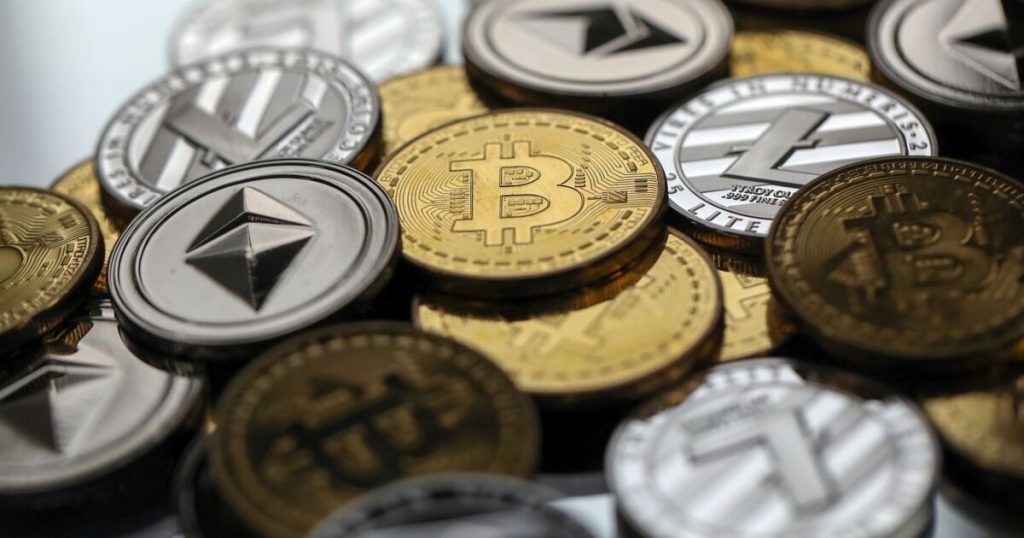Chris Ratcliffe/Bloomberg
The price of
What does this portend for crypto and the broader financial system?
A lot will depend on policymakers and regulators. As acting Comptroller of the Currency, I’ve seen up close what happens when short-term industry interests are prioritized based on promises and dreams of innovation and growth. I’ve also seen what happens when regulators stick to their missions of ensuring safety and soundness, despite enormous pressure to do otherwise.
Heeding the lessons of history can help find the sweet spot that promotes both responsible innovation and safety and soundness. Two lessons in particular are relevant to crypto today.
History lesson #1: Excessive industry accommodation and deregulation can lead to financial instability and bailouts.
The seeds of the 2008 financial crisis were planted when banking and derivatives were deregulated in the late 1990s and early 2000s.
The Gramm-Leach-Bliley Act of 1999 removed the Glass-Steagall requirement that commercial and investment banking be separated, thereby allowing risky trading activities and traditional banking to take place under one roof. The Commodity Futures Modernization Act of 2000 deregulated derivatives, turbocharging trading and structured finance. And regulators shifted, deferring to the “expertise” of bankers and traders on a range of matters, including on how to measure risk.
The result was an increase in risk-taking, a decrease in financial resilience, and a buildup of blind spots and false confidence. In short, policymaking choices enabled the rapid growth of a fragile, interconnected shadow banking system fueled by derivatives and financial engineering.
Little of that was apparent in the early 2000s, when profitability and growth reigned supreme. Everyone, it seemed, had drunk the Kool-Aid about innovation and growth and was making money based on the ingenuity of modern finance. The 2008 financial crisis revealed that to have been a dangerous mirage.
History lesson #2: Safety and soundness can limit contagion.
Contrast the 2008 financial crisis with the rapid rise and fall of crypto during the pandemic.
In 2020 and 2021, crypto grew rapidly. By early 2022, crypto’s total market value exceeded $3 trillion. Then in May, the Terra/Luna stablecoin collapsed, which was quickly followed by the bankruptcies of dozens of crypto companies, culminating with the failure of FTX in November. Peak to trough, over $2 trillion of crypto value evaporated that year.
The banking system’s resilience to the crypto crash went largely unnoticed. In contrast to the 2008 financial crisis, where the failures of nonbanks and crashes in asset prices quickly engulfed banks, the disorderly failures of crypto firms and collapses in market values of cryptocurrencies in 2022 were largely contained away from the banking system.
Why? Because bank regulators did not compromise on safety and soundness when it came to crypto.
In 2021, as banks grew increasingly curious about tapping into crypto’s growth, I gave a series of speeches highlighting crypto’s risks, which were underplayed by the industry. In discussions with bankers, I emphasized the importance of building proper controls should they get into crypto. We made clear that banks could engage in crypto if, and only if, they could demonstrate they could do so safely and soundly.
This approach by the OCC prevented excessive and risky interconnections between crypto and banking from building up. When crypto finally imploded, OCC banks’ exposures were limited and manageable. Bank depositors and borrowers, who had nothing to do with crypto, were largely unimpacted by the crypto meltdown — an outcome that has been taken for granted by the public but should not be forgotten.
Looking ahead, crypto appears to be atop the financial regulatory policy agenda for Congress and the incoming administration. Policymakers have signaled a desire to turn the page. Recent complaints from the industry about “debanking” have added to the momentum. Deregulation and pro-crypto policies are coming.
Innovation is critical to dynamism and should be encouraged. However, not all innovation is equal. History warns of over-accommodating short-term industry demands and deregulating to the point where innovation for innovation’s sake takes over. We know how that movie ends. By maintaining the right guardrails, policymakers and regulators can adopt pro-crypto policies that make space for purposeful innovation, without putting the broader financial system at risk.
As the philosopher George Santayana once said, “Those who cannot remember the past are condemned to repeat it.” If policymakers and regulators apply the lessons from our past — by not compromising on safety and soundness and avoiding excessive deregulation — a healthy balance between promoting responsible innovation and maintaining safety and soundness can be struck.
